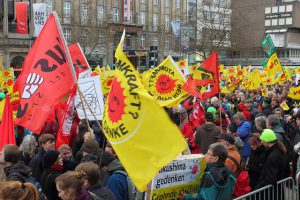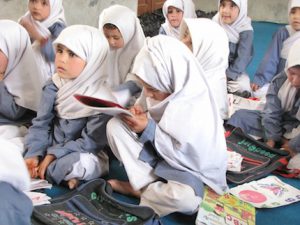Germany’s attempts to radically transform its national energy supply and demand (known as the ‘Energiewende‘) has given new impetus to both city-level and public participation in renewable energy.
The Energiewende, or energy transition, is a national plan to reduce greenhouse gas emissions, increase renewables and improve energy efficiency. The concept was first put forward in 2010, but gained wider support after the Fukushima nuclear accident in Japan. Less than a week after the accident in Fukushima, 40% of nuclear power capacity had been switched off. And by 2011, the German Government had adopted plans to accelerate the transformation of the country’s energy system.
The plan requires a reduction of primary energy use by 50% by 2050, a complete phasing-out of nuclear energy and an ambition to generate 80% of Germany’s electricity from renewable sources.
Munich, the third largest city in Germany, has set particularly ambitious goals. The city aims to completely switch its electricity supply to renewable energies by 2025. The city recently opened a virtual power plant – a network of small-scale renewable energy plants which are pooled and operated like a single system, thus avoiding the fluctuations that characterise individual wind and solar power facilities. To meet the city’s considerable energy requirements, the city-owned utility company acquired 25 wind power plants in northern Germany.
However, shifting energy strategies isn’t just an urban issue – the inhabitants of the village Wildpoldsried in south Germany who invested in solar, wind and biomass projects now generate far more energy for electricity and heating than the demand of the village. The surplus energy is sold to the grid.
In northern Germany, the citizens of Ellhöft are now operating a citizen wind park with six 1.3 MW wind turbines. The locals benefit in several ways: control of their own sustainable energy supply, new local job creation, support of the regional renewable energy sector as well as revenues and local business tax for the municipal budget.
The examples of Wildpoldsried and Ellhoft illustrate how communities are playing a significant role in driving the energy transition in Germany. More than 50% of the renewable energy capacity for electricity production, so far, has been installed by individual citizens, cooperatives and farmers.
In fact, the main four energy suppliers in Germany own just 6.5% of the installed renewable energy.
The number of German energy cooperatives active not only in the solar, biomass or wind energy generation, but also in grid operation and distribution has soared over the past few years to reach about 600 – spurred on by financial incentives that guarantee anyone generating electricity from renewables a fixed rate for the next 20 years.
Such a high share of decentralised fluctuating renewable energy is challenging the established market design in Germany and perhaps, redefining municipalities and their citizens as key players in the transformation of the energy system.





